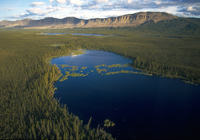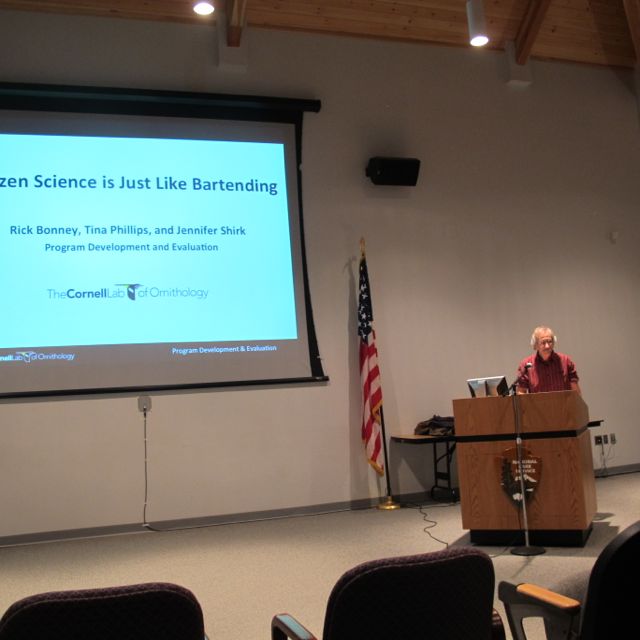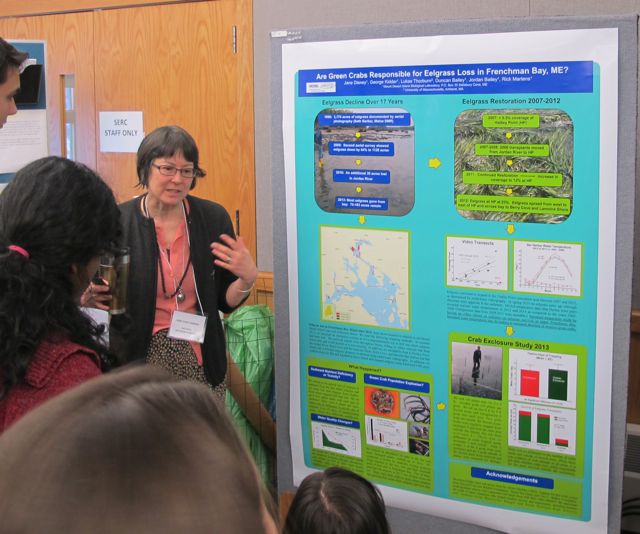Almost four years ago, an animal video shot by a French television crew at a garbage dump in Saudi Arabia went viral on YouTube. The footage had been packaged into a nature-show segment (see link below) that purported to illustrate—with mixed reactions from dog and baboon experts—that troops of baboons kidnap puppies and keep them as pets. The dogs were said to grow up with the baboons and protect the troop.
Now Cornell student and Naturalist’s Notebook contributor Luke Seitz has captured on video a brief but similar scene to contribute to the scientific debate over whether baboons indeed “keep” dogs: Click on this link to watch Luke’s 10-second video, shot in Ethiopia just over a month ago near the edge of Lake Langano, close to a hotel complex called the Simbo Resort:
Here is a series of still images from Luke’s video
The baboon snatches up the puppy and starts to carry him or her across a rocky slope.
Luke saw this behavior on successive days with the same group of baboons. He was in Ethiopia shooting video of that country’s endemic bird species for the Cornell Lab of Ornithology, so he didn’t have time to hang out and further document the behavior.
The dog does not seem to resist the baboon.
If baboons are indeed taking and raising dogs to be pets of a sort—and I’m eager for more research into that possibility—we shouldn’t be completely stunned. Even though they are classified as “old world monkeys,” a group that split 30 million years ago from the primate family from which modern humans evolved, baboons share 91% genetic similarity to humans. Tests have shown that baboons have the ability to recognize printed words and think abstractly.
In addition, according to American Journal of Primatology, researchers in Brazil studied another group of highly intelligent primates, bearded capuchin monkeys, and found some that raised a baby marmoset (also a type of monkey), for years as what could be seen as either a pet or a child—in either case, a beloved family member.
…and another shot in the series…
…and one last image before the tape ends.
Immediately below is the nature-show segment that shows baboons with dogs at that Saudi Arabian garbage dump. The early part of the segment is a bit hard to watch, as a baboon grabs a puppy by the tail, drags the dog down a rocky slope and sits on the pooch in an act of domination—though that doesn’t seem so different from the way many young children (and, sadly, some human adults) treat their family pets. Later in the segment there is footage that shows the baboons and dogs playing, relaxing and hanging out, and the dogs apparently standing sentry to protect their baboon family troop.
Let us know if you’ve got anything to add on this whole subject. If you would like to read more about birding wunderkind/artist/photographer Luke Seitz and Ethiopian birds, read the post we put up on The Naturalist’s Notebook Facebook page a few days ago.
We will put an expanded version of the Ethiopian bird post here on the blog soon and will keep you apprised of any updates on the baboon-dog front. Many thanks to Luke for letting us share his footage!
—Craig Neff and Pamelia Markwood














